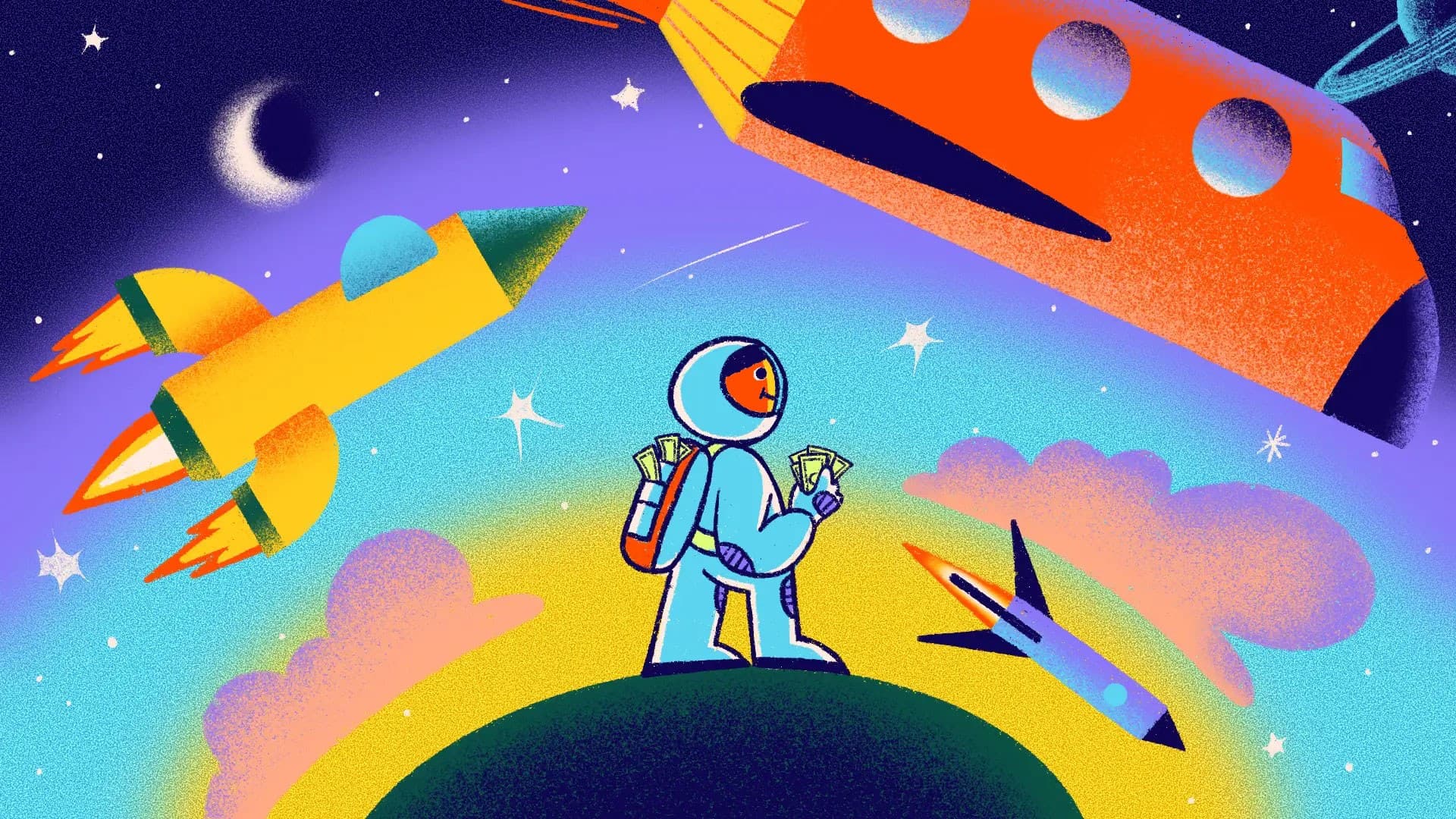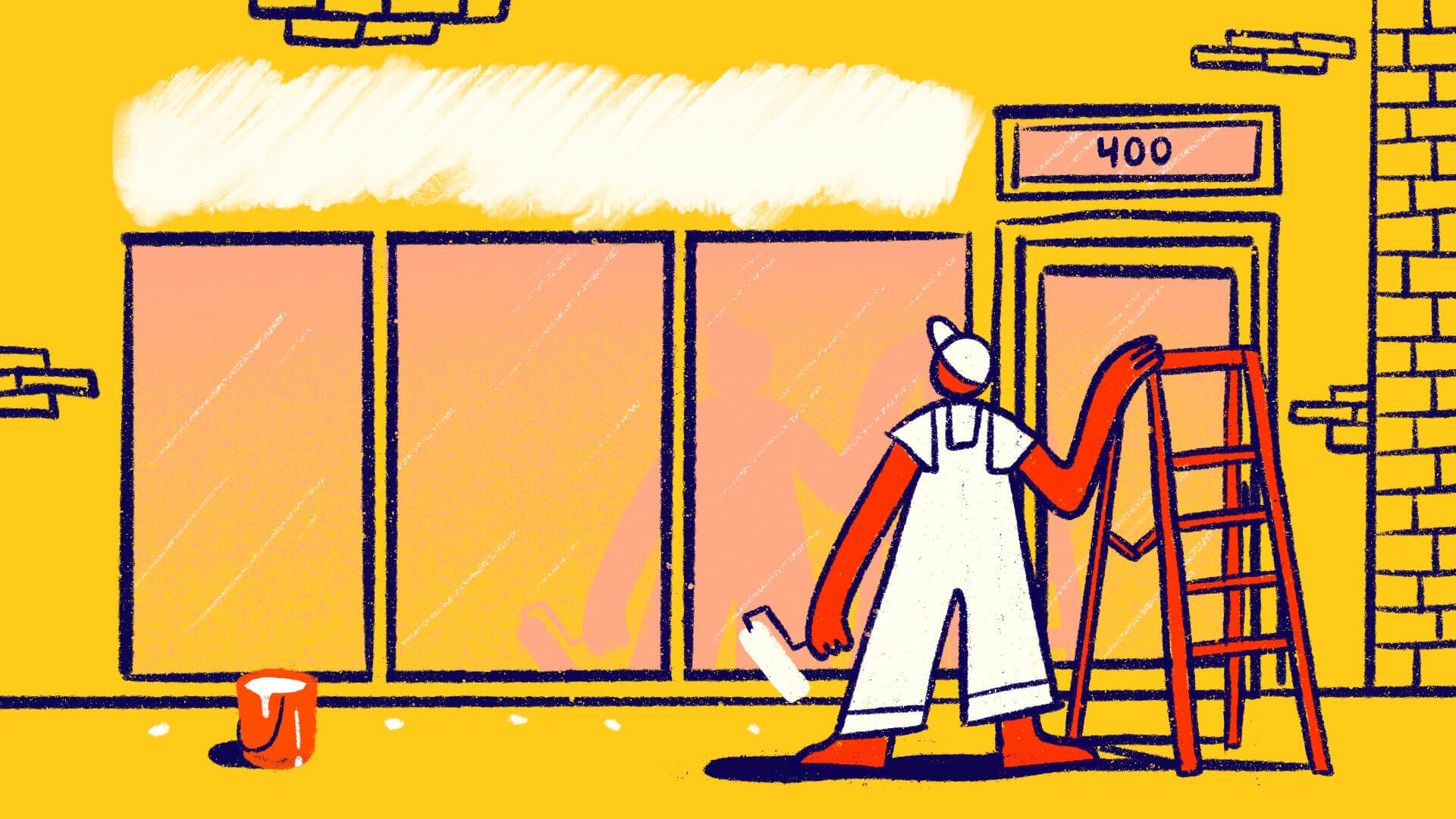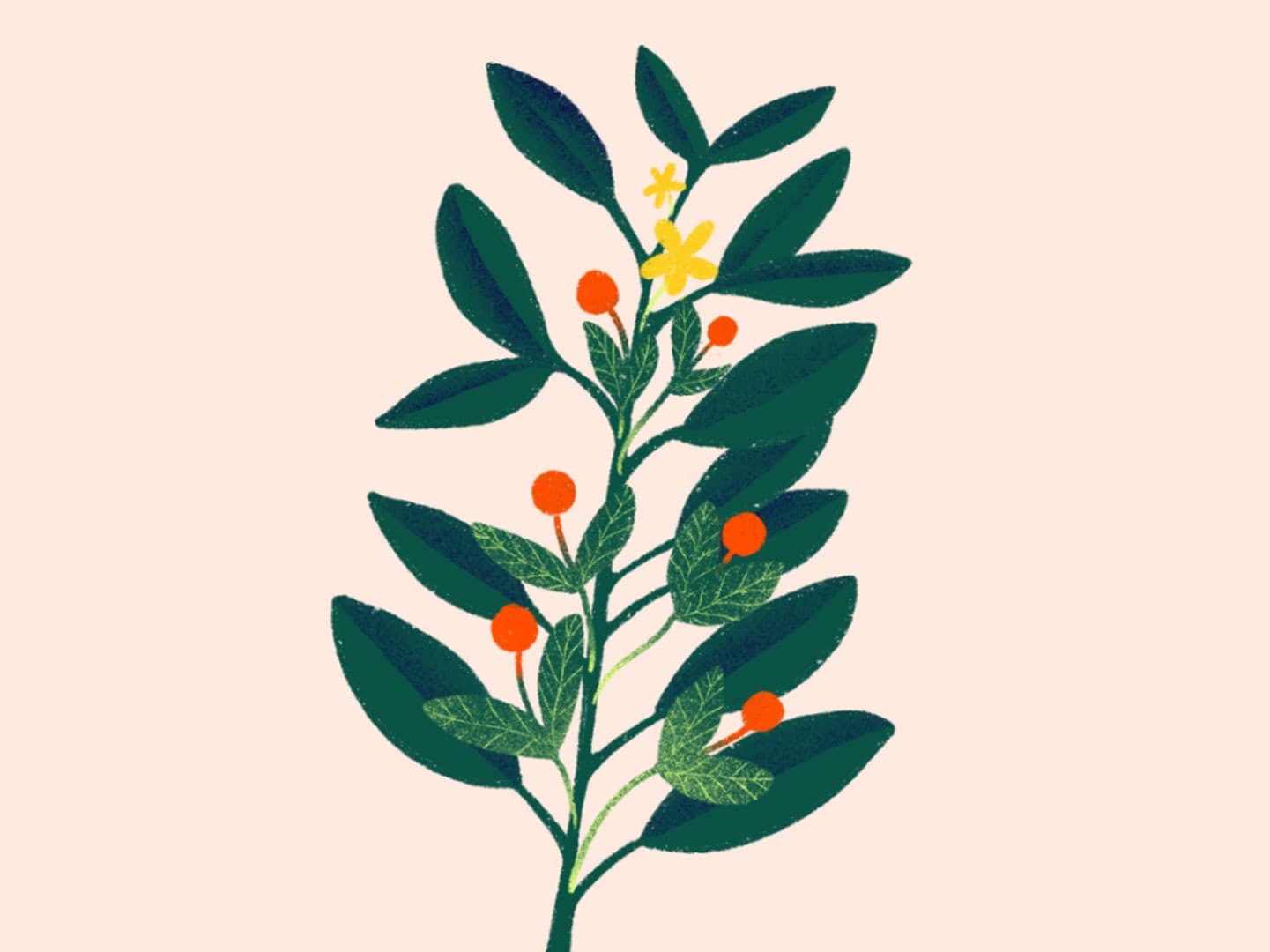By Deroy Peraza, Partner at Hyperakt
AI seems to be in every conversation around us these days. AI is coming for our jobs. We need an AI policy. AI is fed by wholesale thievery of intellectual property. AI will save us. AI will end us.
Clearly, we’re scrambling to understand the implications of a change so big and so fast we can barely wrap our heads around it.

Illustration by Merit Myers
Before we get into how we got here, and what the consequences of AI will be for branding and design, it’s important to start with one grounding idea:
The inherent value of creativity is that it is an expression of the human condition.
Branding and design are creative outputs. Creativity gives voice to the human experience, emotions, struggles, aspirations, stories. It helps us create connection and empathy. It helps us process life’s complexity and meaning. It helps us create cultures, and a sense of belonging to them. It helps us solve problems and adapt to new challenges.
Creativity is one of the things that makes us human, and we should never forget that. But that doesn't mean our relationship to how we create won't change.
Now, how did we get here?
AI Shouldn’t Be a Total Surprise
Stanley Kubrik’s 2001: A Space Odyssey—a creative masterpiece of a film released in 1968, based on a book released a few months earlier authored by Arthur C. Clarke—anticipated this moment. Spoiler alert, the film is Clarke and Kubrik’s way of processing the potential impacts of advanced technologies like AI on humanity. Set mostly in space, the film actually begins in prehistoric times to make its main point: that humans have always had the disturbing tendency of turning technological tools into weapons for self-defense, self-advancement, dominance, and destruction.
Fifty-two years later, it’s easy to see how ChatGPT’s release in 2022 puts us on a path where HAL 9000, the conversational AI with “emotional intelligence” trusted with literally keeping the movie’s astronaut protagonists alive, is not such a crazy idea (see Ezra Klein's recent podcast on the impending arrival of AGI—Artificial General Intelligence). Add it to a growing list of predictions the movie made, which, ironically, mostly started materializing after the year 2001: space stations as habitats (2000), predictive algorithms (2000s), video calling (2003), tablet computers (2010), voice-controlled interfaces (2011), virtual assistants and multimodal communication (2011), smart homes and centralized systems (2014), artificial intelligence (2016), autonomous systems (2016), human-machine relationships (2016), reusable spacecraft (2015), augmented reality & advanced interfaces (2016), AI-powered diagnostics (2018), space tourism (2021). Yet to fully materialize: cryosleep, artificial gravity in rotating space habitats, fully autonomous spacecraft decision-making systems with advanced general AI and emotional intelligence (like HAL, the villain of the movie).
I won’t get into the philosophical, ethical, and existential considerations of a HAL 9000-like situation. I’m just hoping we can learn the fundamental lesson most sci-fi movies try to teach us: Yes, we’re brilliant at inventing technology and we’re great at seeing the upside. We’re less great at seeing or dealing with its potential harms.
But I will take a look at how all of this is affecting branding and design, a domain I’m much more comfortable grappling with than the survival of the human race as we know it.
Confronting Reality in An Increasingly Artificial World
First, a confession: I use AI regularly as a research assistant. It’s exciting. The access to information is intoxicating. The computing power is mind blowing. The research capabilities are astounding. It would have taken me forever to compile the list of technologies predicted by Clarke and Kubrick without ChatGPT to conveniently fetch that for me. AI tools are great at finding things that exist—much better than a simple Google search. They’re great at synthesizing them, organizing them, and adjusting to every request you throw at them. They’re great assistants and they will only get smarter and cheaper as the AI race heat up (looking at you, DeepSeek).
I realize the next thing I'm about to say might well be outdated in mere months as we get closer and closer to AGI. My experience of AI tools so far is that while they're great at regurgitating, they aren’t great “creators.” As 2001 foreshadowed, they are also prone to errors in judgement and embedded with the same biases and flaws as the humans who created them.
So how is the broader creative sector experiencing these tools? Warning: These numbers are going to feel like a gut punch. According to research published in the Harvard Business Review in November of 2024: “After the introduction of ChatGPT, there was a 21% decrease in the weekly number of posts in automation-prone jobs compared to manual-intensive jobs. Writing jobs were affected the most (30.37% decrease), followed by software, app, and web development (20.62%) and engineering (10.42%). A similar magnitude of decline in demand was observed after the introduction of popular image-generating AI tools (including Midjourney, Stable Diffusion, and DALL-E 2) were introduced. Within a year of introducing image-generating AI tools, demand for graphic design and 3D modeling freelancers decreased by 17.01%. Additionally, we noticed that over time, there were no signs of demand rebounding, revealing a growing trend of job replacement.”
Uh Oh, Is Creativity Dead?
If you’re like me, your heart sank to the floor as you read those numbers. You probably had some feelings of guilt, too: “Oh shit, I use ChatGPT all the time. Am I digging my own grave?”
There’s no denying that the employment landscape in creative industries will continue changing as AI evolves. As the HBR article highlights, the shift has already begun and it will only accelerate. This is the worst AI will ever be, and it's already pretty mind-blowing. The changes ahead will be significant. Some roles will evolve, others may disappear, and new opportunities will emerge. It’s a realignment, much like the ones brought on by the advent of Photoshop or the rise of the internet—but bigger. Rejecting a technology that is becoming omnipresent around us is not a winning strategy—just imagine the impacts of rejecting the rise of the web in the late 90s and early 00s. The key to thriving in this transition is in quickly identifying what parts of the creative process are replaceable or “automation-prone,” which are harder to replace, and which new roles can now emerge.
AI and Branding
As we integrate these technologies into branding and design, a critical question arises: Can AI ever replace the human strategy, creativity, and authenticity that make brands meaningful?
I’m no futurist, but based on my experience, the answer is a resounding no. While AI can help streamline tasks and amplify our abilities, it cannot replace the uniquely human elements of collaboration, instinct, unpredictability, empathy, judgement, and ethical responsibility. As one of our clients, Nick Fabiani, Creative Lead at the Robert Wood Johnson Foundation, puts it: “At the end of the day, my take on AI is anything that is worth time for someone to consume—any piece of written media, visual media that is worth someone engaging with and trying to get meaning from—is worth the time for a human to create it.”
Why the Human Element Matters
People want to feel ownership over the ideas they help shape. They want to be part of something bigger, and they want their values to shine through in the work. AI might assist in the execution, but it can’t replace the emotional intelligence, intuition, and cultural awareness that define truly impactful branding. Even if it was possible to create a facsimile of emotional intelligence, how would it be believable without real experience to back it up?
The process of collaboration and co-creation is central to building brands that resonate.
As Harvard Business Review points out, “AI is shifting the focus of work away from predictive tasks to those requiring human judgment and decision-making.” AI excels at speed and efficiency. It can crunch data, predict trends based on patterns, and attempt to generate (more like regurgitate) creative outputs. But the content it generates is only as interesting as the prompts that guide it and the human editing that makes it fresh, surprising, and authentic. Outputs aside, branding and design are not just about the deliverables—they’re about the journey of getting there. As Fabiani notes, “How we get there, how we arrive at it, is the important part, really. So that’s sort of where I draw the line on AI—how do you replace actual human experience?"
Preparing Creative Leaders for an AI-Augmented World
As AI takes on more technical and repetitive tasks, the next generation of creative leaders must be equipped with new skills. It’s no longer enough to just master design software or write compelling copy. Creative leaders need to know when to prioritize intentional, values-driven work over the speed and quantity enabled by AI. We must think critically and holistically about our work: who it’s for, why it matters, and how it brings people together. But beyond that, we have to focus on the thing that will never be replaceable: human-to-human relationships. Brands are ultimately about the humans behind them: humans who need to feel listened to, guided, validated, represented, dignified, motivated, inspired, driven by purpose and meaning.
AI as a Tool, Not a Replacement
AI has become an indispensable assistant in creative work. It can accelerate and enhance workflows. But it should always remain just that—an assistant. It is not a replacement for the creative processes that connect people to ideas and to each other. Humans must stay in the decision-making seat, driving the strategy and meaning behind the work.
The most successful brands are not built on efficiency alone but on meaning and resonance. AI can help us get there faster, but it’s the human experience that makes the destination worthwhile.


